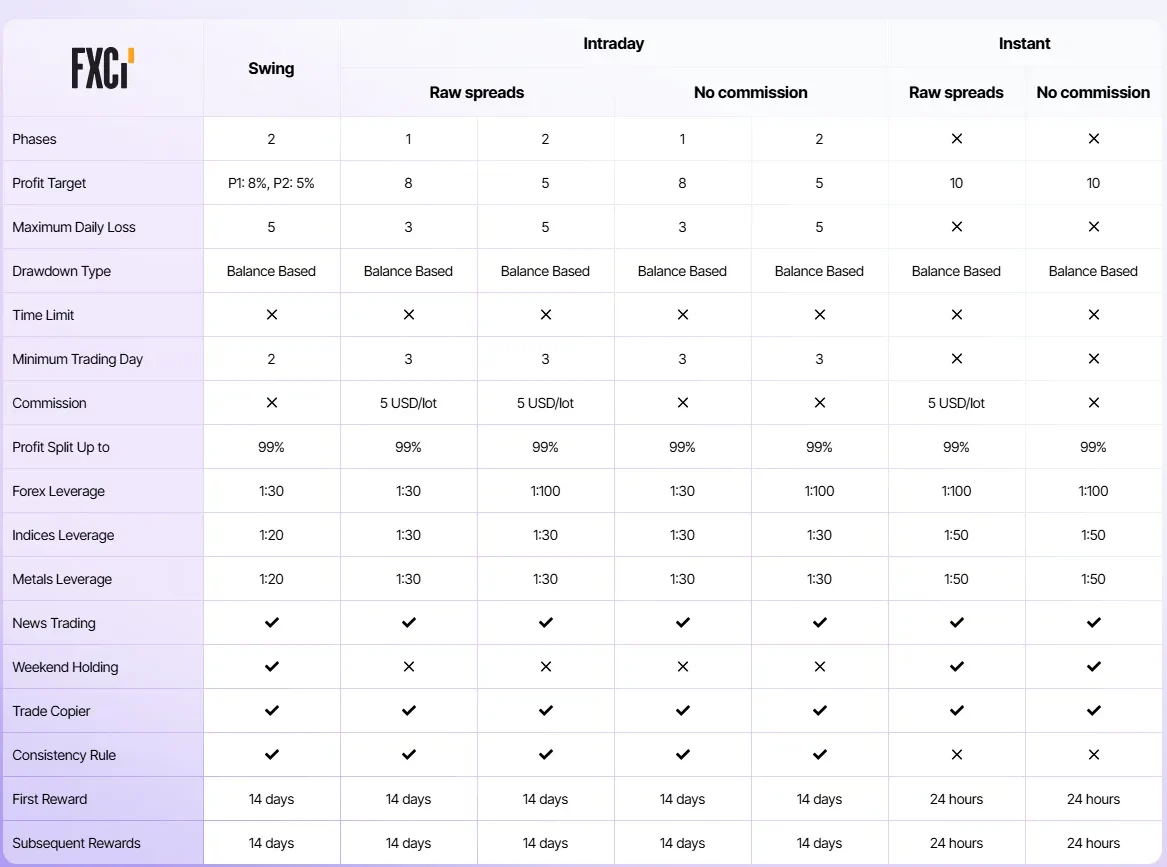Prop trading with algorithmic strategies
FXCI prop trading firm offers funded accounts up to $300,000 in India. Earn up to 99% profit trading with FXCI’s capital.
LIMITED TIME! 50% OFF Trading Challenges
Use code «FXCI50» before time runs out. Start with $300K capital & earn 99% profits. Register now below 👇
Prop trading with algorithmic strategies is transforming how traders approach the markets. In the past, trading involved manual analysis and decision-making, but the integration of algorithms has allowed traders to execute strategies at a much faster rate with minimal human intervention. This approach offers numerous advantages, from speed and accuracy to backtesting and optimization.
In this article, we’ll delve into how algorithmic trading works in prop trading firms, what strategies are most effective, and how traders can leverage automation to enhance their profitability. We’ll also explore the challenges that come with it and provide practical tips for using automated methods successfully.

What Is Prop Trading with Algorithmic Strategies?
Prop trading, or proprietary trading, involves trading using a firm's capital rather than the trader’s own. The introduction of algorithmic strategies into this model has been a game-changer. In simple terms, algorithmic trading uses computer algorithms to automate trading decisions based on pre-set rules.
The integration of algorithms in prop trading has allowed firms and individual traders to tap into opportunities that would have been difficult or impossible to exploit manually. These automated systems are designed to handle complex calculations and execute trades faster than human traders could. Moreover, they can analyze vast amounts of data to predict market trends and optimize trading decisions.
Benefits of Algorithmic Strategies:
- Speed and Efficiency: Algorithms can execute trades within milliseconds, ensuring that traders capitalize on market movements faster than competitors.
- Reduced Emotional Bias: Trading decisions are based on data and predefined criteria, which eliminates emotional decision-making.
- Backtesting and Optimization: Traders can test strategies using historical data to see how they would have performed under different market conditions.
- Scalability: Algorithms can trade a large number of assets simultaneously, allowing for diversification and spreading risk across various markets.
Common Algorithmic Trading Strategies Used in Prop Trading
There are several algorithmic strategies that are commonly used, each with its own advantages and use cases. Some of the most effective strategies include:
- Trend-Following Algorithms: These strategies aim to identify and follow market trends. They are particularly effective in volatile markets where trends can lead to significant profits.
- Market-Making Algorithms: These algorithms facilitate liquidity by continuously buying and selling assets. They profit from the bid-ask spread.
- Arbitrage Algorithms: Arbitrage strategies aim to exploit price discrepancies between different markets or asset classes.
- Mean Reversion Algorithms: These strategies assume that prices will eventually revert to their average over time. They are useful when markets overreact to short-term news.
Algorithmic Strategy Comparison Table:
| Strategy | Purpose | Best Use Case | Risk Level |
|---|---|---|---|
| Trend-Following | Follow market trends | Volatile markets | Medium |
| Market-Making | Provide liquidity | High-volume assets | Low |
| Arbitrage | Exploit price discrepancies | Different markets or assets | Low |
| Mean Reversion | Capitalize on market overreactions | Stable markets with high liquidity | High |
Challenges in Prop Trading with Algorithmic Strategies
While the benefits of using algorithms in trading are clear, there are challenges to consider. Some of these include:
- Overfitting: An algorithm may perform well in backtesting but fail in live trading due to over-optimization for historical data.
- Market Changes: Markets are constantly evolving, and a strategy that worked in the past may not be effective in the future.
- Complexity: Designing and maintaining algorithms can be complex, requiring advanced programming knowledge and a solid understanding of financial markets.
- Regulatory Risks: Some regulatory bodies impose restrictions on algorithmic trading, so traders must be aware of compliance requirements.
Despite these challenges, many traders are embracing automated strategies in prop trading due to their clear advantages in terms of speed, efficiency, and scalability.
How to Get Started with Algorithmic Trading in Prop Firms
For those looking to get started with algorithmic strategies in prop trading, here are the key steps:
- Learn the Basics of Algorithmic Trading: Understanding the fundamentals of algorithmic trading is essential. You should have a strong grasp of trading strategies, market analysis, and basic programming skills.
- Choose a Reliable Prop Trading Firm: Research firms that offer this type of trading and select one that suits your trading style and goals.
- Develop or Customize Your Algorithm: You can either develop your algorithm or work with a firm that offers pre-built strategies.
- Test and Optimize Your Algorithm: Backtest your algorithm using historical data to identify potential issues and optimize it for better performance.
- Monitor and Adjust: Once live, continuously monitor the performance of your algorithm and make adjustments as necessary to account for changing market conditions.
Steps for Getting Started:
- Understand basic algorithmic trading concepts.
- Research prop trading firms.
- Develop or select an algorithm.
- Backtest and optimize your strategy.
- Monitor your algorithm's performance and adjust accordingly.

Conclusion: The Future of Algorithmic Strategies in Prop Trading
The integration of algorithms into prop trading is revolutionizing the financial markets. By leveraging automation and advanced mathematical models, traders can gain an edge that would be difficult to achieve manually. However, it's important to remember that success in this field requires more than just having access to the right technology. Traders must also continuously adapt their strategies to keep pace with evolving market conditions.
The future of algorithmic trading in prop firms looks promising, as these strategies continue to evolve. By embracing these tools, traders can unlock new opportunities and optimize their trading for greater profitability.
FAQ
What is Prop trading with algorithmic strategies?
Prop trading with algorithmic strategies involves using automated systems to make trading decisions using a firm's capital rather than a trader's own.
How can I start using algorithmic strategies in prop trading?
To start, you need to learn the basics of algorithmic trading, choose a reliable firm, and develop or select a suitable algorithm.
What are the risks involved in using algorithmic strategies in prop trading?
Risks include market changes, overfitting of algorithms, and the complexity of maintaining a system that works effectively in live trading.
Can anyone use algorithmic strategies in prop trading?
Yes, but it requires knowledge of both financial markets and programming to implement and maintain algorithmic strategies.
How do I choose the best algorithmic strategy for prop trading?
The best strategy depends on your risk tolerance, market conditions, and trading goals. Testing different strategies is key to identifying what works best.


